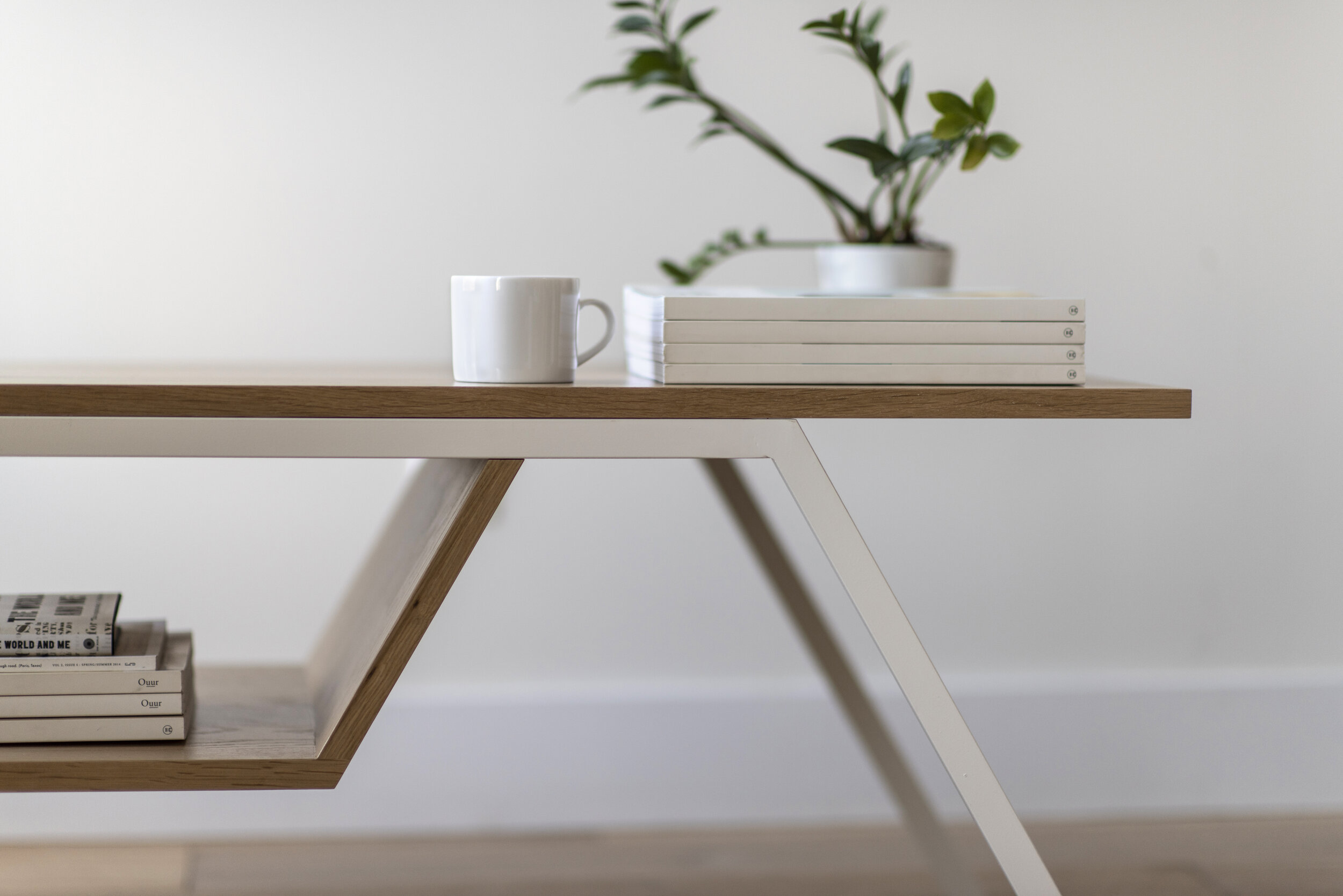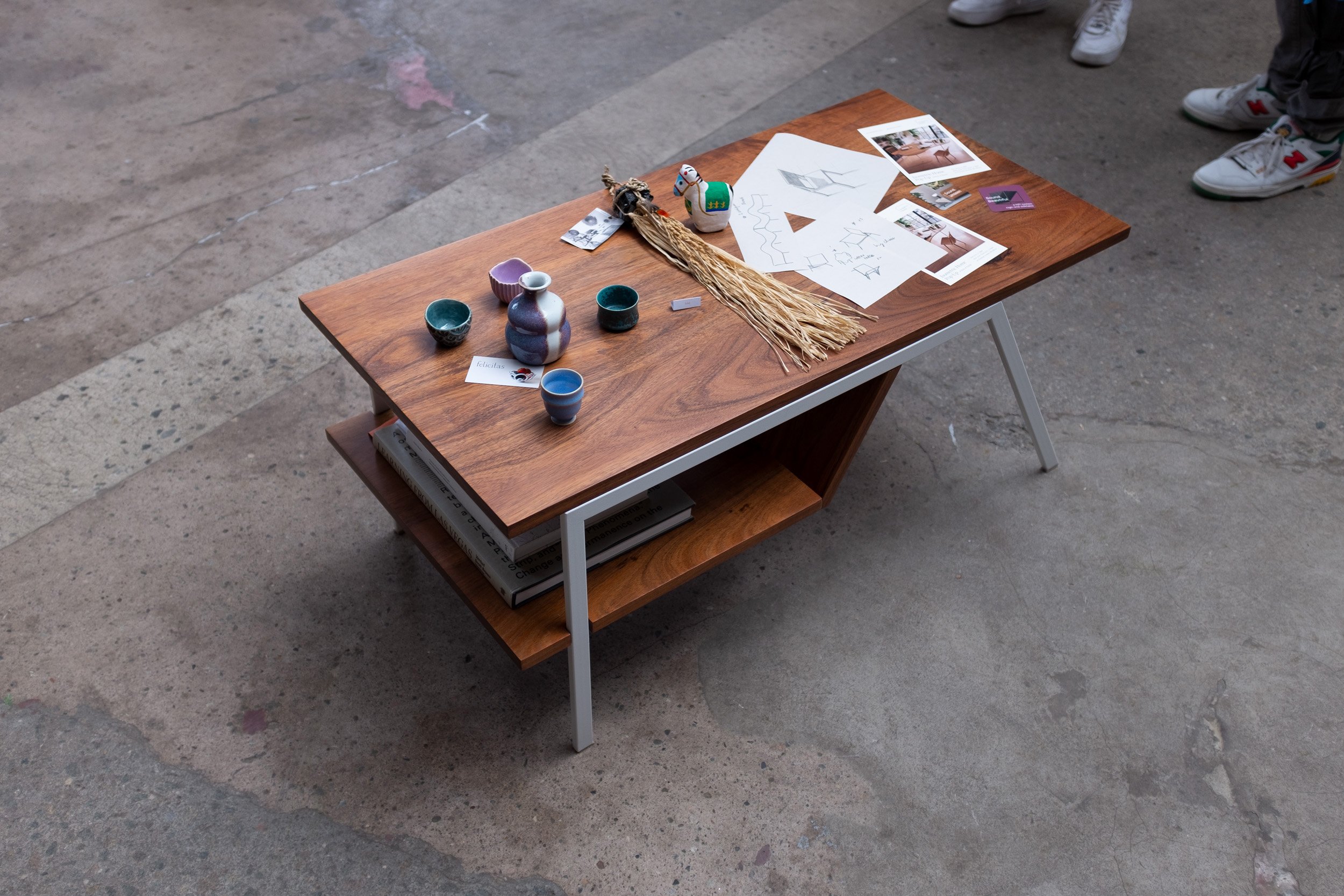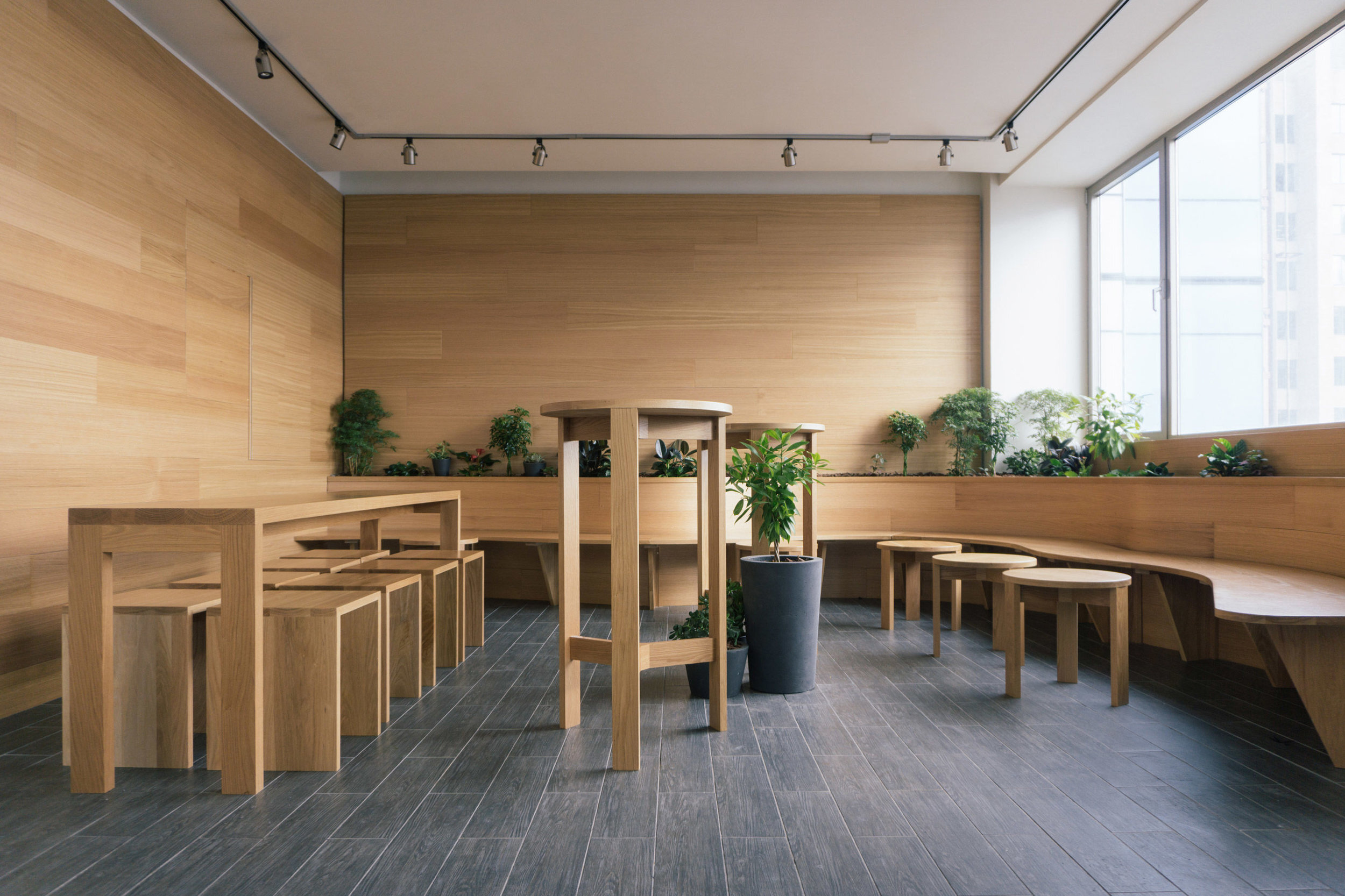
Why Museum Furniture?
To complement exhibition narratives, museum furniture is uniquely designed to be resilient and accessible. Furthermore, by eliminating recognizable signs of what conventional furniture looks like, it enables visitors to suspend disbelief and open possibilities for new ways of thinking and interacting. At a time when homes have adopted more functions, we took these distinctive elements of museum furniture and brought them to people in their homes.
Key Characteristics
While collaborating with the master craftspeople at Parz Designs, our collection was designed with three main goals:
Consistent materials, finishes, proportions, and tectonics.
Well-crafted and thoughtful, but not showy or ostentatious.
Quirky shapes and forms that defy the boring and generic.
Isometric Home began when the COVID-19 pandemic caused New York City to shut down. Soon, we saw our homes transform into centers for schooling, work, relaxing, and much family and alone time.
Like museums and exhibitions, our homes also became the backdrop for who we are and how we present ourselves to the world. Now, with our private spaces on display through virtual calls and gatherings, we decided to create a furniture collection inspired by our work with exhibition design.
“Our team has embraced ethnography, graphic design, and architecture as one continuum of design practice towards a modernist ideal: “Gesamtkunstwerk”, “综合艺术品” —or the total work of art. In some ways, this parallels an evolution in society in thinking more about the emotional, intellectual, and visceral impact design has on its audience rather than imposing strict boundaries around the medium of delivery.”
—Andy Chen, Isometric Partner
Isometric Studio
—
Based in New York City, we collaborate with leading cultural institutions, universities, tech companies, and nonprofits to reinvent the way they present themselves visually and strategically. We express the missions of these organizations through visual identities, exhibitions, websites, and signage programs that convey intellectual rigor, aesthetic sophistication, and memorable storytelling. We believe in design that transcends existing expectations by challenging cliches and stereotypes in visual culture.
In collaboration with our clients, we shape narratives and spaces of belonging. Through design, we advance an ethos of inclusion, equity, and justice, centering the lived experiences of marginalized people. Our projects often address complex social issues, amplifying activism on gender equity, climate change, racial justice, LGBT identity, and immigrant rights. Our more well-known clients include the USAID, Google, Museum of the City of New York, Cooper Hewitt Smithsonian Design Museum, and the Center for Reproductive Rights. We have also collaborated with 15+ departments and offices at Princeton University.

Parz Designs
—
As the ultimate brother and sister team, Callie and Randy Parz work closely on every project PARZ Designs is contracted to create. Batman and Robin have nothing on these two and, that’s why they’re playfully referred to as “The Dynamic Duo.”
Callie has worked in the world of carpentry and finishing for over 20 years. With her experience in managing teams of workers and rolling up her sleeves to do the work herself, she’s a key ingredient in the success of PARZ Designs. She oversees the general management of the company, down to the last brush stroke of finish, ensuring that it is quality all the way. When she’s not tending to the day-to-day of PARZ Designs she enjoys spending time with her 2 beautiful children and their lovable Labrador Retriever, Max.
Randy’s over 30 years of experience in high-end carpentry and stair installation has molded him into a master of his craft. Watching him carve a simple block of wood into a beautiful piece of art that perfectly complements the space around it is like something out of a comic book. We’re still not sure he doesn’t have some hidden superpower he’s not divulging. When he’s not shaping dreams out of wood he enjoys cruising in his tesla and spending time with his wife.







